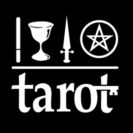Magical systems – how many can you associate with the Tarot? The list below is impressive, but not complete.
Kabbalistic connections
The serendipitous structure of the Tarot allows us to develop various protocols. Here is a list of magical practices associated with the Tarot. Kabbalah Angelic Magic:
- 22 Letters of alphabet
- Shemhamforash: 72 Spirits
- 10 Sephiroth: Minor arcana
- 4 Elements:
- 4 Worlds Astrology
- Goetia: 72 Spirits; 36 Day and 36 Night – 36 Minor arcana
- Lunar Mansions 28 = 4×7
- Nakshatras
- 7 Olympic Planetary Spirits
- 12 Signs of Zodiac – Archangels, Angels – Major arcana
- Enochian
- 93 Governors
- 88 – 22 Major arcana in 4 Elements
- Four Watchtowers
- Egyptian Gods
- 16 Gods = 4×4
- 30 Aethyrs
- Heptarchia Mystica
- 7 Spirits
- 21 Letters (plus one letter)
- Geomancy
- 16 Symbols
- Shamanism
- 4 Directions, 4 elements 3 Worlds
- Tantra
- 7 Chakras
- Tattwas 4 plus Spirit
- I Ching 64 Hexagrams = 2×32 Paths
- Wicca
- 8 Spoked Wheel of the Year
- Voodoo
- Santeria
See Voodoo - Sufism
Magicians do not understand the Tarot
This is list is not complete! There is a curious dichotomy. Magicians do not use Tarot, while readers are rarely knowledgeable on magic. Furthermore, current understanding of Tarot is rooted in the Victorian obsession with classification. Readers isolate cards in a reading: The Future is here; the Past is there; Work is in another place; while Love is elsewhere. The Magician, however works to unite the aspects of body, mind and soul to work in harmony towards the intent to create change. The Magician, Shaman, Wiccan, or user of Enochian all creates a Sacred Space that is defined by the Four Directions. This Sacred Space can further be defined as relating to the four elements.
All the magical practices mentioned above is defined by the use of the four elements, or the seven planets, which make them accessible to the Tarot in some form. Further, because the four elements are intrinsic to the Tarot, we do not need a different deck for each practice. Ingenuity is needed, but Magicians are resourceful!
There are dedicated decks for many of the Magical systems mentioned above, but they are not strictly necessary. While the current state of Tarot is rather backward, surprisingly the creator of the Thoth Deck, Aleister Crowley, understood the limitations of knowing only the classification of the Tarot: “The Holy Qabbalah is a system of classifying the Beings, By-comings, Thoughts, Monads, Atoms, Waves, Packets of Energy, Ideas, or whatever one chooses to call them; of memorizing, discussing and manipulating the Relations between them.
“The Units of this system are Numbers: generally, one means the “natural Numbers”… Each Unit is a living idea or person; to each are related in nature all other ideas in some way.”
For Crowley, all the concepts were relative – it was the relationship between the cards that counted, and he inherited this idea from science and physics, particularly relativity theory, and from the Golden Dawn system of divination, where the Magician had to visualise himself at the centre with the cards projected around him in a particular order that extended to the constellations. Within all this he also projected a three-dimensional Tree of Life which created one pillar at the centre, and four pillars at the four directions. Between the Pillars he also visualised the Enochian Watchtowers. In one master-stroke, the Magician had united in Space, Enochian Magic, the Tree of Life, Kabbalah, and Tarot.
